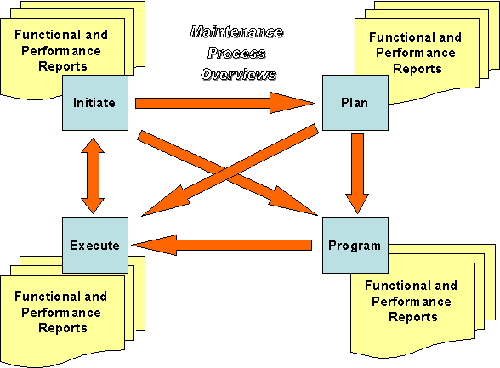The Future of CMMS
Daryl Mather
During the past two decades advances in CMMS technology have changed forever the face of maintenance management and how we, as an industry, conduct our business. We now have the ability to automate many of our standard maintenance processes, analyse in detail various parts of our businesses, and the performance of our equipment. We are able to plan shutdowns, technical change projects and operational maintenance procedures down to a very fine level of detail. As maintenance management generally makes up around 40 – 50 % of operational budgets, the savings made possible from increased efficiency and reduction of waste are staggering.
However one of the sad realities of this extraordinary rate of change is that the business processes have not adequately kept pace with the advances in technology. Thus we unfortunately have the situation whereby the capabilities of many CMMS systems far exceed the capabilities of maintenance organisations to fully utilise them. Most companies with CMMS, either as MRO stand alone or sub modules of EAM and ERP systems, are not realising the full benefits of their investments.
So with this in mind, what is the future of CMMS systems? How far down the road to the optimal state of maintenance management can they take us? And furthermore, how far do we want them to take us? Many of the technological requirements of the future maintenance departments exist today. But, as with the standard functionality of CMMS, the level of acceptance is not yet there to make this economically viable.
The future of CMMS lies within three key areas of development:
- Adaptability to maintenance Management Processes and Increased Functionality
- Software Operating and Delivery Platforms
- Interoperability with standard office software and process systems
While there are definitely other areas that will also advance markedly, it is within these three areas that there will be the greatest gains to an organisations bottom line. And with these will come the possibilities of further services not yet accepted in the worlds of maintenance.
Adaptability to Maintenance Management Processes
Maintenance Management Processes
When we buy a CMMS, or purchase the modules of Enterprise level management systems, what we are really buying is a philosophy on how to execute our maintenance management. These have started to converge greatly over the past five years and the thin line between ERP and EAM systems is beginning to disappear as far as the functionality of maintenance modules are concerned. The current systems in these spheres, although extremely advanced, generally lack functionality covered by the other in areas of maintenance and or operational planning.
Soon all systems, from a maintenance viewpoint, will be basically Enterprise Management Systems and be generic enough for effective application within either the capital intensive industries of mining, oil and gas, defence and utilities as well as into the standard ERP spheres such as manufacturing and process line planning and control.
All will be based on standard maintenance procedures and business processes and will have the screens and fields necessary to support these. For example, the generic process of operational maintenance can be reduced to four steps. Flexibility will need to be included to ensure that any one of the four paths to execution can be taken, with each step having its pre-determined series of functional and performance reporting structures built into the programs.

1. Initiate
Via work request systems or other work vetting mechanisms, or directly into the work order streams. This can also be managed automatically as results from condition monitoring tasks or as tasks pre-programmed to coincide with machine hours or other operational statistics.
2. Plan
For work orders that meet or exceed the corporate guidelines on what work orders should be planned.
3. Schedule
For all work orders meeting the corporate criteria for scheduling.
4. Execute
For all work orders. With the capability of accepting data for later use in Root cause analysis and maintenance strategy overviews, as well as general maintenance performance data.
Although the general work flows always remain the same the specifics of each installation will sometimes vary dramatically depending on their particular approach and philosophy to maintenance delivery. As such the CMMS of the future will need to have the ability to add or remove fields and screens as required. Even to the point of being able to create user specific fields.
One of the issues generally surrounding CMMS system implementation is the reports available. There can be any number of reports required for measuring maintenance effectiveness and performance. However general maintenance reporting, and analysis, is pretty much standard. However the client will need to be able to quickly and easily, create their own reports in the format that they choose to do so. This functionality is generally lacking today, and with the advances in software technology it shouldn’t be.
Increased Functionality
The future CMMS will be judged a lot harsher than those of today. As a minimum the following Modules or areas of functionality will be demanded:
- Work requesting / Work Order Management
- Planning indicators and capabilities
- Automatic Scheduling as per forecast man hour capacity levels.
- Automatic scheduling as per materials availability levels.
- The ability to schedule work on the basis of equipment operation or condition.
- Control over inventory levels and materials planning to a distance of 3 to 5 years.
- Equipment condition monitoring and alarm generating capabilities.
- Asset register creation and the inclusion of equipment/ Component tracing capabilities
- Project Management Capabilities
- Shutdown Planning Capabilities
From this baseline the functionality demands will be centered around automating the general maintenance processes . For example automatic weekly scheduling. Firstly inclusion of the preventative and predictive maintenance tasks that are required, then auto inclusion of the corrective maintenance actions in order of priority. Tasks will be measured against the known human resource levels available to be scheduled, as opposed to all resources available, and then in accordance with materials availability. Any re-scheduling will be done on the same prioritised basis.
Further functionality developments will center around auto creation of work orders for pre-set equipment conditions, auto generation on various operational statistics and so forth.
Another drawback of many of today’s CMMS is that, while they cater well for the requirements of managing maintenance in general, they rarely possess the functionality required to optimise maintenance performance. For this reason there is a wide range of peripheral or additional software for the optimising of such tasks.
Many of these can be modified to interface with CMMS systems, however they need to be integrated in such a way that historical data within the CMMS can become part of an automated decision making process. These fall into three key areas, all of which are vital to the progression of maintenance management as well as the downward spiral of maintenance costs.
- RCM or other form of Equipment Strategy Optimising Module
- Root Cause Analysis Modules
- Inventory Optimisation or Criticality Analysis Module
- And in the case of maintenance service providers, built in Customer relations Managers.
Software Operating and Delivery Platforms
Although the prospect of increased automation of maintenance processes is extremely interesting, the area which holds my attention is this one. The platforms of the future will be aimed at reducing hardware requirements, reducing data entry requirements and creating applications that are more suited to working in the terrain that they are designed to manage.
Of course the principle CMMS delivery platform of the future will be the internet. This technology is still in its infancy but already shows great promise. Already there are a couple of exclusively internet systems providing CMMS services. Even some of the larger systems have created internet style versions, although few are true ASP’s requiring only the internet browser to run them.
The next step is to truly integrate these with the wireless devices that are beginning to flood the marketplace. I refer here to palmtop computers, digital video recorders or even internet enabled mobile phones. For example picture the following scenario.
Joe Mechanic arrives at work for the day, on downloading his daily schedule to his palm top, re-scheduled as required by plant operating conditions. He has all of the information required to do the work in his palm. Materials, procedures, safety information, special tools required and estimates of durations and total man hours required. He even has the option of viewing the training video clip to revise any areas he feels are lacking.
While working through his first task of the day he finds a problem that wasn’t planned for. A quick flick through his palm top raises the warehouse requisition and the material required and if available, which it will be as the inventory has been optimised by the built in inventory optimiser, it is delivered to him within 15 minutes of it occurring to him.
On completion of his task he then punches in, or scans, any relevant failure codes and completion commentary, inclusive of any tips to do the task easier and then closes or reschedules the work order as required. This data, after any required revisions, is immediately updated on the work order template for that task if it exists.
Of course while working on the job at hand, a higher priority task can be sent to his palmtop workstation, or he even has the option to create further work requests or work orders if he so requires. All without leaving the job site and without the need for any paperwork at all.
How many times have you seen failure of CMMS due to poor computer literacy skills of supervisors or other key users? In my time working with CMMS systems I have yet to see this level drop. People, despite the advances in technology, are often not inclined to learn basic computation skills, for whatever reason. And in any case, they exist to do what they do best, fix and maintain equipment in an efficient and safe manner. Why draw them needlessly away from their comfort zones?
Further advances will eventually arise in the areas of barcode usage. Although it is now widely used there are always exiting new developments in this area that will grow in their acceptance as time passes. An example here would be the use of bar-coding devices for work order creation and completion. An operator, on noticing a fault, will be able to scan his series of barcodes relating to the equipment that he is operating. This will then create the work order required with a standard description and the relevant work order description for that task.
Interoperability with standard office software and process systems
Today this functionality does exist however it is rarely direct to the database system, nor is it in a real time format. In order to capture all of the data required by operational and conditional decision making modules, it is necessary to have some form of interface with plant or equipment operating systems. For example inputs from engine monitoring devices, or inputs from plant and production monitoring DCS systems.
As mentioned many of the solutions on the market place today are able to accommodate this form of data interfacing, however they do it in a batch manner. This takes away the ability to monitor operations information that may change rapidly and require rapid reaction to that change.
The CMMS of the future will need to take this into account and provide for the measurement of process variables in a real time fashion. Many CMMS systems may even grow to encompass the functionality of today’s process management technologies as well as the increased functionality required for managing 21st century maintenance.
There will also be increases in the uses of wireless technologies. For example on line interfacing with engine monitoring systems on haulage equipment. Thus even further augmenting the condition monitoring abilities of the software and its abilities to avoid potential costly failures.
Also there needs to be further advances in the use of standard office software. An example here would be the widespread usage of Gant Chart applications. The ability to transfer data from the CMMS to the application and then update the CMMS with any changes.
The Services of the Future
With these advances in place the services available in the future are mind-boggling. One that has impressed itself greatly on me is the possibility of outsourcing the maintenance management function in its entirety. But in a manner far removed from the basic outsourcing contracts and arrangements in place today.
By the use of web based CMMS a company could easily provide the functions of maintenance planning and scheduling as well as root cause analysis and strategy optimisation in an outsourced manner. This could easily reduce operating costs as one company could provide these services for any number of sites. As well, in this manner, they could also develop standard work order templates and other maintenance management items that could easily be transferred from one operation to another. Thus reducing the costs of maintenance optimisation and system development to each individual site.
Maintenance call centers could receive work requests or work orders, with their corresponding agreed priorities, via cell phones telephone, email or via the clients own access to the web based maintenance management system. They could then coordinate their work force to best manage the work over all of the sites that they had under their control. In a world where profits are now very dependent on the ability of corporations to control their operating costs, this could prove extremely beneficial to entire industrial parks. Or even entire industry sectors.
Conclusion
As can be seen the future of this important tool in the fight to continually reduce costs is both interesting and exiting. Although many of these developments may take a few years to become reality, the vast majority of the technologies mentioned here are available today. And with time they will become even more effective and less cost prohibitive in the purchase stages. As always, what is required more than anything else is end user acceptance and understanding of the benefits of such technologies. Once this is achieved then the business of maintenance can achieve a quantum leap in its state of efficiency.
Daryl Mather
Related Articles

Too Small for a CMMS? Think Again

The Role of Information Technology in Plant Reliability





